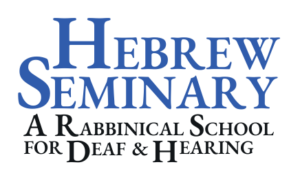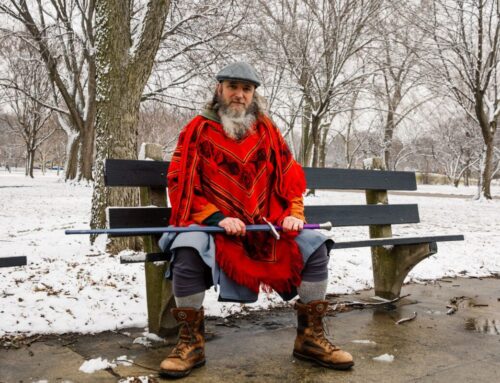Sefer Assiyah September 2019
In This Issue:
- Teachings and link to photos from our summer event
- Mazel tov to recent graduate Rabbi Dr. Rivka Glick!
- Invitation to our Interfaith Thanksgiving Service
This summer our Hebrew Seminary community explored and reflected upon the Jewish practices of Mindfulness, Kavvanah, and Meditative Focus: the Three Roads to Prayer and Daily Living. Hebrew President, Rabbi Dr. Douglas Goldhamer began the program teaching us how these three techniques work together to bring us closer to God.
“Today we will discuss Meditation and Mindfulness and Kavvanah. Yes, I know when I meditate I strongly feel the Presence of God. Yet, meditation does not make me holy. I am already holy. You are already holy. Meditation does not make you into someone else. Meditation allows you to be who you are.
The Torah, Leviticus 19, already says we are holy. There is no becoming. Meditation does not make you holy. You are already holy. Psalm 46:11 teaches us “Be still and know that I am God.” Meditation allows you to be who you are. If you are still, quieting your body, heart and mind, then you will know that the “I” or the Self that you are right now is a manifestation of God.
The English word “meditation” comes from the Latin word “medi,” which means “center” That’s why people talk about getting centered when discussing meditation. You touch your center. We also know it is also getting in touch with the center of all life.
Each practice takes time to create the space to experience and even hear at times the Infinite Alef or Hashem. Jewish Meditation lifts each one of us to the One. And it brings us back to being one with one another.
Each meditative practice must be done with kavvanah. Jewish prayer begins with kavvanah. To pray with kavvanah means to pray with focus, intention and meaning, because the root of kavvanah in Hebrew is kaven, which is from the verb kaf vav nun, meaning “to direct.” So kavvanah on the simplest level is “meaning” or “AIM.”
There are three ways to practice kavvanah in prayer. The Hebrew word for prayer is tefilla. To do prayer with kavvanah, you need to internalize the words – which means, you need to know the meaning of the Hebrew words that you are praying. The second component of kavvanah in prayer is recognizing that one is praying to fulfill the mitzvah of prayer. A third element of kavvanah is recognizing that one is praying in the Presence of God – just like it says above us on our Ark , “Know before whom you stand.” Mindfulness, Meditation, Kavvanah – three roads that lead to prayer. Each different and yet each the same.”
Executive Director Alison Brown, our second presenter, shared Rabbi Goldhamer’s meditation, “Become a Channel of God’s Healing Energy Using the Name of God Yah.” This meditation, based on Ezekiel 36:26 and found in Rabbi’s book Healing with God’s Love and at hebrewseminary.org, is an example of a guided concentration meditation. Here attention is focused on the Holy Spirit, Ruach HaKodesh, “and a new ruach I will put in you.” Meditations such as this trigger a relaxation response in your body. Practiced over time this ability to relax changes your response to stress. Focusing on the kavvanah, the intention of becoming one with Ruach HaKodesh is a two-for-one meditation. You develop your relaxation response and experience an expansive, holy refuge in consciousness.
Most days we rush to and from meetings and projects, scurrying texts and emails in between hoping to get out the door at some elusive point for social gatherings and appointments. Still, in the present moment God awaits. In the Presence lies our cultural inheritance. Our forefathers tended flocks, pausing regularly to meditate in green pastures. This cultural inheritance is what scientists call gene-culture co-evolution. Language and social awareness prompted natural selection to guide the development of our brains and nervous systems. Our inherited pastoral consciousness may be a gifted propensity that, with kavannah, with intention, we can experience, enjoy and wire to more reliably fire. This present moment consciousness can stride to the forefront and embrace you wherever you are.
Recently my grandson was under the weather. He was lying on the couch with my son when Jagger said, “You can cuddle with us Cocoa!” The present, the Presence of love embraced me. This was a Shehekheyanu, God helped me reach this moment, lazman hazeh, at this holy time. Pay particular attention to the rewarding aspects of these experiences, big and small. Be grateful for them, focus on the feelings surrounding them, and call them up when you need them to support your well-being in trying times. Shehekheyanu moments strengthen neural associations, they make memories, and they change our genes.
Another example of a concentration meditation, practiced by 16th century Jewish mystics in Safed, is gerushin. Practitioners read or recite from memory a single word, such as Shalom, or several verses of Jewish text for unstructured meditative explorations, or to connect with sages past, to help solve a problem or to guide daily life.
As an example, at Hebrew Seminary’s event I shared Pirkei Avot, Chapter 1: Mishnah 15. I recite this text with kavvanah in hopes of becoming this person:
שַׁמַּאי אוֹמֵר, עֲשֵׂה תוֹרָתְךָ קֶבַע. אֱמֹר מְעַט וַעֲשֵׂה הַרְבֵּה, וֶהֱוֵי מְקַבֵּל אֶת כָּל הָאָדָם בְּסֵבֶר פָּנִים יָפוֹת:
Shammai used to say: make your [study of the] Torah a fixed practice; speak little, but do much; and receive all men with a pleasant countenance.
G-d dwells in the shared place within and between us. It is known that turning up the corners of your mouth, a cheerful countenance, opens your heart to the moment, our shared space and the Presence.
Rabbi Dr. Roberta Glick, our third presenter, spoke of how she enters the world of prayer and blessing:
And just as we read the same Torah portion each year and derive different meanings from it, because we are different. We see different things in the same words. Similarly, when I prayed daily with this mindful focused more poetic intention, kavvanah, of connection, oneness, love, it made me stop and pay attention to how I was at that moment, what I felt, what I needed. Like taking your temperature. When I took this mindful pause, I indeed found that I was different each day. The formal liturgy became my anchor. And the words, albeit the same, took me to different places, and evoked different feelings, each day. Commitment is also essential to spiritual practice; you have to do the work, the homework, even when you don’t feel like it. This is what taking on the yoke of heaven means to me: commitment. Like in any love relationship. But is prayer these personal emotions, or the communal recitation of fixed words? It is both; and we need both. “Sometimes words lead us to feelings; sometimes feelings lead us to words” Heschel elegantly stated.
I enter prayer with this type of consciousness. The soul is always praying. Prayer is a love poem, an intimacy of the soul and G-d. It’s an opportunity to step outside our self, and to connect to the perfect. It’s a clarification of ourselves: who we are, our needs and desires, if we look deeply within our self. It’s looking in the mirror and seeing who we really are. Tefillah as Self-examination. Self-Judgment. Again, Rav Kook: Prayer does not change G-d. Prayer changes us.
Roberta’s insight into prayer is an important reminder of prayer’s power and embracing space. She adds:
In prayer, we create our image of G-d, our imagining G-d as we need, Lover, Mother, Father, Fountain of life, Healer, Judge, All Being, Ain Sof, Echad. Therefore, I suggest that the greatest creation of all is the human consciousness. Judaism has to be one of the most imaginative creative religions. Our words create our consciousness; hopefully they are seeds of lovingkindness, generosity, justice and compassion. Torah and the siddur are our spiritual guides, our spiritual tools. Torah is G-d speaking to us; Prayer is us speaking to G-d. And the connecting thread is love, as we try to sacredly attune to the Divine. Tune in.
Mazel tov to Rabbi Dr. Rivka Glick, awarded smicha by
Rabbi Dr. Douglas Goldhamer on Sunday, August 25, 2019!
In 1204, the greatest teacher of Jewish thought and law passed away in Egypt. His teachings, initially in Spain and then in the Middle East, became revered the world over. What makes his teachings super unique is that Maimonides, or Rambam as he was called, was also the greatest physician of his time. He was the greatest physician and the greatest Rabbi of the 12th century. He wrote and taught the world over on medicine and Jewish thought. Rabbi Dr. Rivka Glick continues in the tradition of being a physician/surgeon and a scholarly Rabbi. Her thesis discussing the presence of God in our life continues in the tradition of the great Maimonides. Mazel Tov and thank you. – Rabbi Dr. Douglas Goldhamer.
Mindfulness, Kavvanah, and Meditative Focus: the Three Roads to Prayer and Daily Living photos can be enjoyed on our website hebrewseminary.org!
Be nochahut, be present and enjoy this expansive moment.





Leave A Comment
You must be logged in to post a comment.